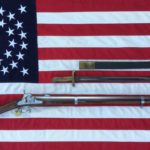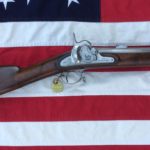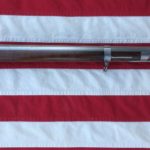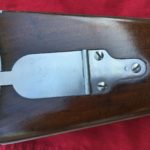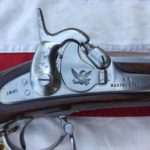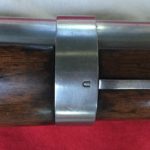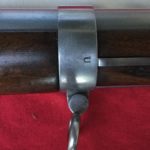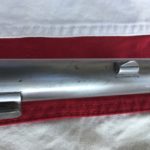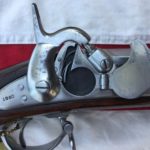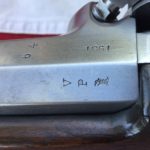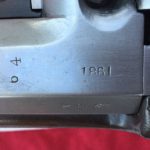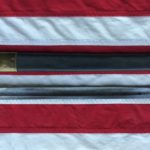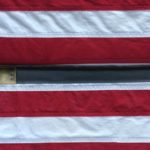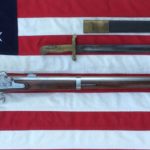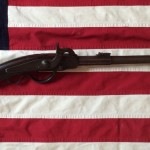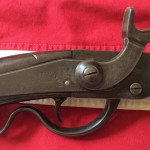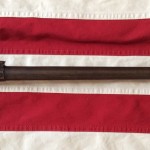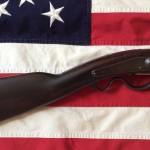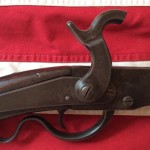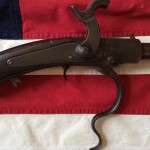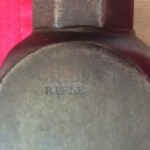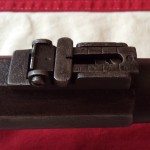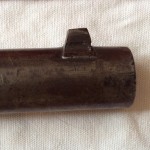- Model 1855 U.S. Percussion Rifle, 1860 Harper’s Ferry Rifle
- Model 1855 U.S. Percussion Rifle Shoulder Stock
- Harper’s Ferry Rifle Forward Stock
- Harper’s Ferry Rifle Patchbox
- 1860 Harper’s Ferry Lock Plate
- Barrel Band Model 1855 Type II Rifle
- Forward Barrel Band Model 1855 Harper’s Ferry Rifle
- Harper’s Ferry Rifle Front Sight & Saber Lug
- Maynard Tape Primer Compartment
- Harper’s Ferry Proof & Viewers Marks
- 1861 Harper’s Ferry Dated Barrel
- Harper’s Ferry Rifle Rear Sight
- Harper’s Ferry Saber Bayonet & Scabbard
- Harper’s Ferry Saber Bayonet
- 1860 Harper’s Ferry Rifle & Saber Bayonet
Between 1857-1861 the Harper’s Ferry Armory manufactured approximately 7300 percussion rifles, with early production rifles (Type I) fitted with brass mounted hardware and later production rifles (Type II) fitted with iron mounted hardware.
For the sake of convenience I will only discuss the later all iron, Type II model. Sometime in mid 1859 the Armory changed over to all iron mountings manufacturing about 3800 of these rifles. They were .58 caliber, single shot muzzleloader, 33”barrels with lug on right side of muzzle for a saber bayonet.
All metal parts were finished bright, tulip type ramrod with swell at point of engagement of nose cap, walnut stocks and patch box on right side. All were fitted with Maynard tape primer compartments and M1858 pattern rear sight.
The 1855 Percussion Rifle was to be issued to Sappers and Miners (Engineer’s) in replacement for the dated smoothbore M1847 Sappers & Miners carbine that wasn’t well liked.
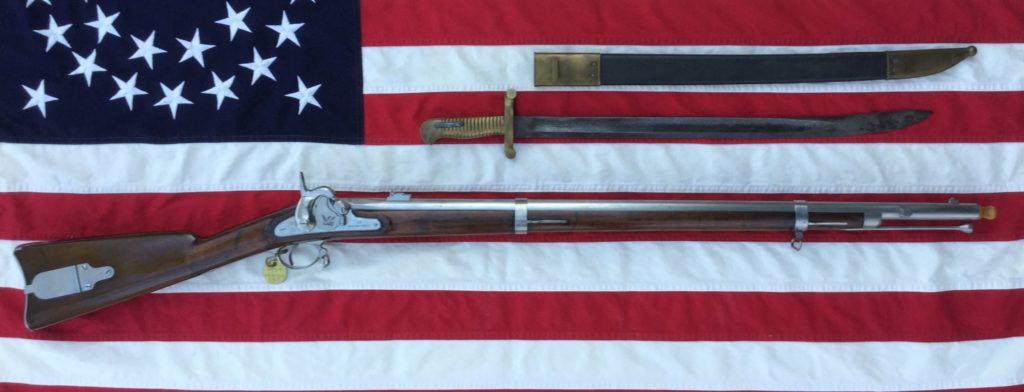
This 1860 Harper’s Ferry Rifle is a fine example of a Type II Model 1855 Percussion Rifle. The stock is in almost perfect condition, it may have been lightly sanded a long time ago however it still has crisp corners on the contours around the lock plate. The metal looks as if it could’ve been made yesterday with barely a blemish on any of its surfaces.
Tucked away in the patch box is an extra nipple as well as a minie ball puller attachment. The breech of the barrel is stamped with rack number 64 and dated 1861, leading me to believe this was manufactured early 1861 since the lockplate is dated 1860.
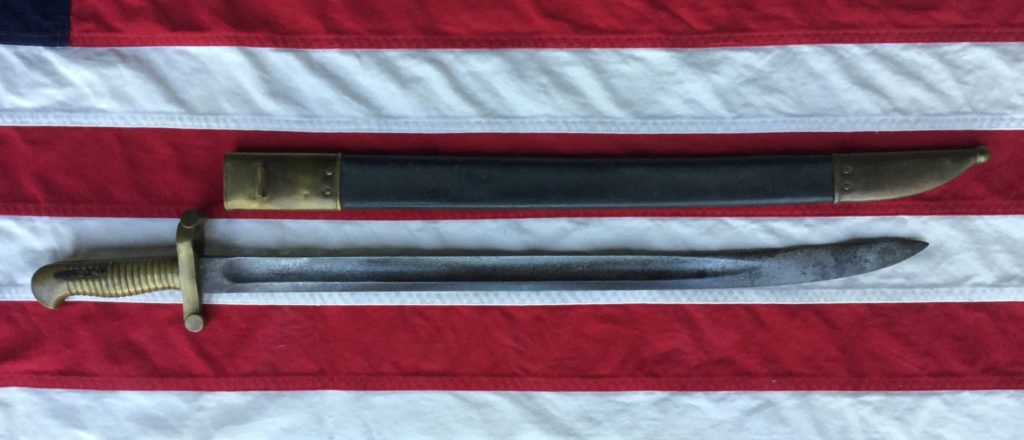
Also included with my newest relic is a Harper’s Ferry saber bayonet and scabbard which is nearly as clean as the rifle itself. So there you have it another addition to the Civil War Arsenals growing Museum. If you have any questions about this weapon or any of the other relics in my collection please contact me at civilwararsenal@yahoo.com attn: Gene West

